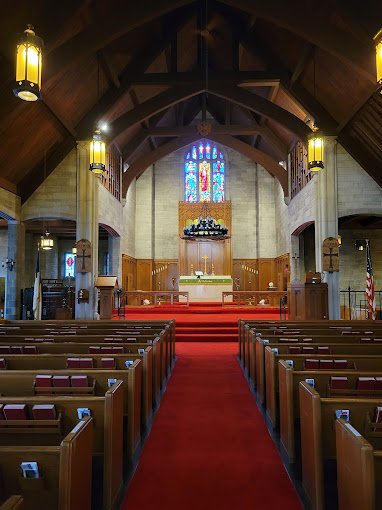Get Tech Tips
Subscribe to free tech tips.
Principles Of Troubleshooting: Seeing the Big Picture
If you’ve been in this trade for any length of time, I’m sure you’ve run into situations that have left you scratching your head. If you’re lucky enough, you have the ability to call a senior tech, service manager, or company owner to bail you out of this situation.
But have you ever run into a problem where even your support system is stumped? These situations can be extremely frustrating and, to be frank, downright scary. It’s a feeling that I and tens of thousands of other techs know all too well. When you’re at a loss for direction and the fear sets in, where should you turn?
It’s such a difficult question that doesn’t have a one-size-fits-all answer. But taking a step back and seeing the big picture can really help you with those difficult, scary situations when you don’t know what to do (and nobody else does either).
Ignorance Is Bliss
I remember a job that I took on 10 years ago, which was replacing a commercial boiler for a church. I installed two Weil-McLain condensing boilers in its place. At the time, I had only replaced a handful of residential hot water boilers and had almost no service experience to speak of.

I approached this job with way too much confidence and enthusiasm; I was still at the “Peak of Mt. Stupid” (a shameless plug for my Dunning Kruger article). I had no idea what sorts of problems I was about to face. And why would I? I didn’t have enough experience to know those problems existed.
Troubles Started To Mount
The tear-out went fairly smoothly with no surprises. We set the new boilers in place and worked on piping them in. The pipework took way too long (longer than I bid for) because I made the decision to install them with black pipe.
The time came to install the 4” PVC flue pipes for each boiler. I decided to rent a 4.5” masonry bit for my (way undersized) rotary hammer. After about 10 minutes of drilling, I realized that this was going to turn into a project in itself; the church walls were more than a foot thick of solid limestone.
We finally ended up getting all four holes drilled, which took nearly an hour per hole. At this point, the job had kicked my butt. It was almost 11 pm, and I was just turning on the water feed and starting to bleed this massive system. I finally got the entire system bled, and it was time to flip the switch. Both boilers started up, and the temperatures climbed quickly—way too quickly.
My Primary Reason For Failing
I believe this was the first job that I did using primary-secondary piping. Primary-secondary piping is a piping method that allows you to separate the water flow hydraulically through the boiler as opposed to the rest of the system. This method is used especially in condensing boilers because of the higher pressure drop across the boiler's heat exchanger. It allows you to use a smaller primary pump and eliminates the need for one pump to overcome all of the building's piping and the pressure drop of the boiler. Long story short, I noticed that the primary loop was extremely hot to the touch, but the secondary was ice cold.
That night, I walked around to the dozens of Trane convector-style radiators and bled them over and over again. I was not getting any more air out of the system, no matter how hard I tried. This was one of my first jobs as a company owner, and I didn’t have anyone to call, especially at 1 am. I had no idea what I should do and was desperate because we were only a few hours away from Sunday morning church.
So, what did I end up doing? Well, I called the church secretary in the middle of the night with my tail between my legs and explained that she would have to cancel church the next morning. I was upset, frustrated, felt completely defeated, and honestly had no idea what to do.
Taking A Stab In The Dark
The next day, I was back at the church. The head of maintenance told me that they had air problems for many years. He asked if I could install an auto vent on each convector. I guess he thought that would solve the air-bound issue. I agreed and quickly drained down the system.
Looking back, I bet that I cleared out the inventory of 3 different supply houses. I purchased every auto vent that I could get my hands on. Finally, I got everything put back together and started filling the system. I remember hearing some air being released, but it wasn’t nearly as much as I expected with the immense volume of piping in this commercial building. I fired the boilers up, and guess what! The secondary loop was still cold!
Mike Will Save Me
At that point, it was Monday, and I was completely frantic. I called my rep that sold me the Weil-McLain boilers, and he put me in touch with the Weil-McLain technical training manager, Mike.
Mike heard the desperation in my voice and realized the depth of the hole I had dug for myself. He came out to the job site almost immediately. He looked over the job and verified that my piping was correct, and he concluded that I had a flow issue. (Umm ya, that's why I called you. I need to figure out what exactly my flow issue is.) The best he could tell me was that the boilers were doing what they should. He did note that there had to be something wrong with the church's piping. Thanks.
The Wheels Started To Spin
That night, I literally sat in a chair staring at the boilers and every inch of pipe in the boiler room.
What could have changed? Why was the heat working before I replaced the boiler but not now?
I got back to the basics; I identified every component in the boiler room and asked myself what its function was and if it was working properly. The church had 4 separate zones and a flow control installed on the returns of each zone. A flow control is a device installed on boiler piping that has a weight on a small angle that rides on a pin through its center. As the water hits the weight, it’s supposed to raise it straight up to allow water to flow. It only works in one direction, preventing the water from moving backward in the system.
I had never experienced an issue with flow controls. Could those be my problem?
Hark! The Herald Angels Sing!

I had already installed check valves on each pump, so the flow controls were redundant. In a fit of desperation, once again drained down the system. At this point, I climbed on top of an 8-foot ladder wrenching the tops off of each of these ancient flow controls. One by one, I used a Sawzall to cut through the steel shaft, leaving the weights lying on the floor. I screwed the tops back on and reluctantly filled the system. I held my breath as I flipped the switch to the boilers.
The pumps started running, so I ran upstairs to see if my plan had worked.
It was like a Christmas miracle. There was a song playing in the church, and it was music to my ears. I was surrounded by a symphony of air being released, and it sent chills down my spine.
I got lucky.
Takeaways
I don’t recommend randomly cutting components out of heating systems if you don’t understand what you’re doing. Without knowing the fundamentals, it’s a lot harder to take a step back and understand how everything really works. If you can understand what systems and components are supposed to do, it’ll be easier to identify what’s not working and use your imagination to consider the possibilities you wouldn’t have with a narrow view of the problem. You can start doing this today, even on a maintenance visit. What should the subcool and superheat be on a properly running system? The fan amp draw? If you don’t know the answer to that, how can you tell when something is wrong?
The one thing that made this experience all worthwhile was that I was not going to walk away from it without understanding the how and the why. I took pictures of the system and studied them after the fact. I looked at what I had changed and how it could have created the issue. It’s important to understand the difference between what is and what once was. You will always be running into new pieces of equipment that you don’t understand. These are great opportunities to force yourself to learn and grow.
Step back and take a 1,000-foot view of what you are working on. Do you understand all of the components and what they should be doing? Was this system ever working in its current configuration? Then, you can try to figure out why it stopped working.
I came to the realization that my problem stemmed from removing the massive old Bell and Gossett 3-piece high-velocity commercial circulators. The new Bell and Gossett PL36 circulators didn’t have the gusto to create the pressure differential necessary to lift the weights and allow the water to flow.
Without understanding the fundamentals, pinpointing the general area of the problem, and reflecting on the problems after we solve them, we will be stuck in an endless loop of changing parts. Instead, we can become expert troubleshooters, able to solve problems and fix things outside of our everyday wheelhouse.
Conclusion
No one is born knowing everything. Most of what I know is because of mistakes that I have made. Make sure to learn from your mistakes and those around you. It is ok to screw up, but learn from it and move on.
There is so much knowledge to learn in this trade, and you will never remember all of it. It is more important to know where to go for information than to try to store it all in your head. If you get stuck in a situation and don’t know what to do, stop, take a deep breath, and take the advice of my best friend, Chris Stephens (HVACR Videos):
Look at the big picture.
—Adam Mufich











Comments
Good story. Made me reminisce about a few instalations that I was on. One was a boiler after it was installed, the boiler would build pressure and start leaking at the pressure safety. My supervisor, who along with others piped the boiler and was piping in another, had me go take a look at it. A flow check was installed on the discharge line and have a guess where they installed the line to the Pressure Troll? By the way, others had looked at this system before I did.
Good story. Made me reminisce about a few instalations that I was on. One was a boiler after it was installed, the boiler would build pressure and start leaking at the pressure safety. My supervisor, who along with others piped the boiler and was piping in another, had me go take a look at it. A flow check was installed on the discharge line and have a guess where they installed the line to the Pressure Troll? By the way, others had looked at this system before I did.
To leave a comment, you need to log in.
Log In